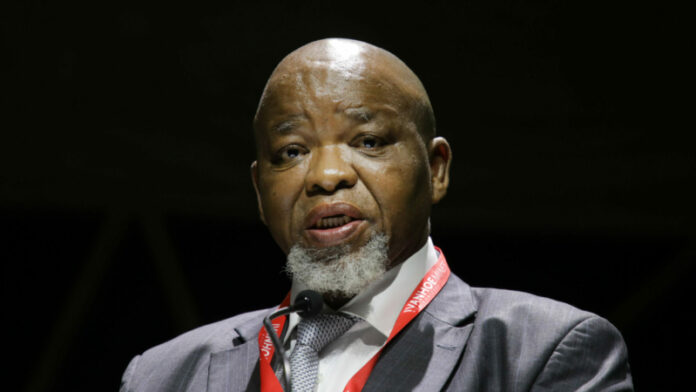
THE South African government’s mines and energy department today convened a summit aimed at identifying “legislative gaps” in the sector’s regulatory framework.
The MPRDA Review Summit was opened by mines minister Gwede Mantashe who said the government had over the years “developed new policies, reviewed and amended our existing regulatory and legislative frameworks”.
He added that the interests of investors and mining communities were not mutually exclusive and that they needed to be balanced.
The MPRDA or Minerals and Petroleum Resources Development Act is cornerstone legislation promulgated in 2004 aimed at vesting ownership of resources with the state on behalf of citizens. It was followed by the Mining Charter which set down regulations for a “use it or lose it” approach to mineral resources.
In 2021, the Pretoria High Court ruled that the Mining Charter was policy, not law, and therefore it could not be used to demand top-ups to the empowerment required by mining firms set at 26% of total shares. The court decision meant that new targets on procurement and empowerment holdings that were introduced by Mantashe in the 2018 Mining Charter were not applicable.
Roger Baxter, the former CEO of the Minerals Council told Miningmx in June the mining sector was compliant with the Mining Charter but that discussions continued. “As the Minerals Council what we’ve been doing is we’ve been focusing on a process of transformation beyond compliance and that’s the conversation that we’re having with government at the moment.”
Mantashe’s comments come on the same day Statistics South Africa published worrying data for May showing mining production had unexpectedly fallen 0.8%. The decline follows an upwardly revised 3.2% the previous month and was far worse than the Reuters consensus expectation of a 1.4% increase, said BusinessLive.
The numbers are an indication that not only are the country’s production sectors reeling from persistent power cuts, but that sharp falls in commodity prices are starting to weigh on sector profitability and may deliver a hit to the fiscus, which has benefited from the commodity price windfall over the past two years, said BusinessLive.
Miningmx reported earlier this month that the tax take from South African mining companies was estimated to halve in 2023 at current spot prices compared to 2021 when the country collected R110bn in corporate taxes and royalties from mining firms.
This was based on data collected from 15 mining companies representing the majority of corporate tax from the mining sector, said RMB Morgan Stanley in a report.
Total taxes and royalties this year were expected to be about R50bn of which platinum group metal companies comprised the largest contribution. Tax from profits of iron ore and coal were the next largest contributors.
“If our base case is right then South Africa’s twin deficits are set to keep downside pressure on the rand and upside pressure on bond yields and interest rates,” the bank’s economists said. A weaker rand could act as a ‘circuit breaker’ when commodity prices fall, said the bank, adding however that after an initial positive contribution from a weaker rand, input costs rise for imported products.
South Africa posted a current account deficit for the first time in three years in 2022 as imports increased and power shortages and logistics network constraints curbed exports.









